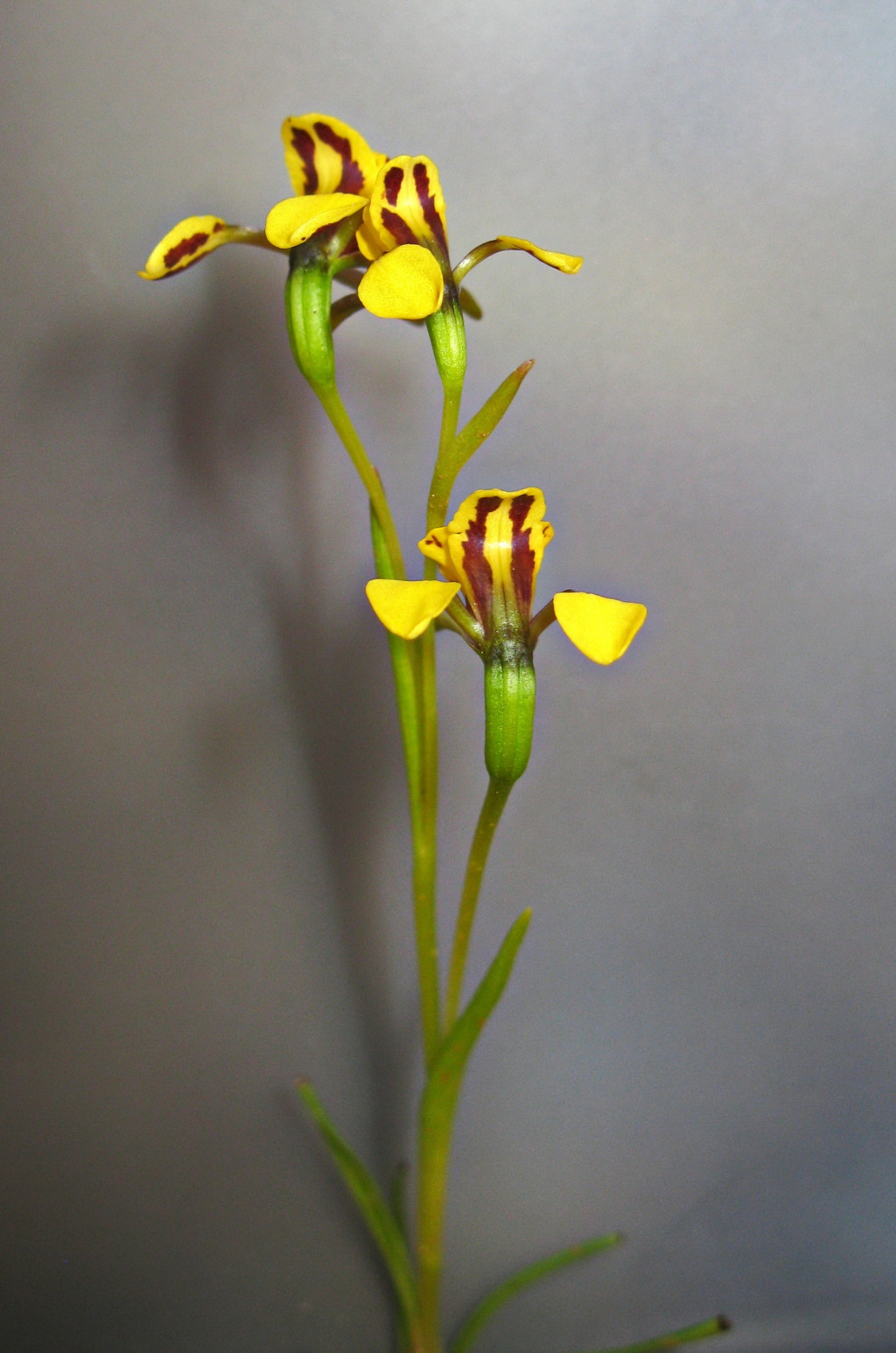Diuris palustris
Lindl. Swamp DiurisFlowering plant slender, 6–15 cm tall. Leaves 8–15, narrow, sub-terete, 2–8 cm long, channelled, usually twisted, in a loose, erect tussock, base crimson. Flowers porrect or nodding, 1–4, yellow, spotted or blotched with dark brown, darker on outer surface, faintly spice-scented; pedicel (excluding ovary) 2–5 cm long, slender, mostly enclosed within bract; dorsal sepal erect, recurved in upper part, ovate, 7–10 mm long, purple or dark brown behind anther, yellowish elsewhere; lateral sepals parallel, deflexed, linear, 12–15 mm long, green; petals obliquely erect or recurved, 7–10 mm long, claw dark red-brown, lamina ovate, often notched, yellow, usually with dark brown vertical stripe on back. Labellum deeply 3-lobed from base, 7–10 mm long, keeled; lateral lobes slightly shorter than mid-lobe, erect, oblong, with rounded teeth at tip, entire elsewhere; mid-lobe spathulate, folded, with 2 fleshy ridges from base to beyond middle, merging into a short ridge which terminates in a rounded swelling at the tip. Column wings higher than anther. Flowers Aug.–Oct.
Wim, GleP, VVP, GipP, OtP, WaP, Gold, CVU, GGr, DunT, HSF, HNF. Also SA, Tas. Scattered throughout western Victoria, frequently in swampy depressions within grassland or open woodland communities, probably now extinct in all former sites near Melbourne.
Known to form hybrids with D. pardina, D. orientis, D. chryseopsis and D. basaltica, the latter known as D. ×fastidiosa.
Entwisle, T.J. (1994). Orchidaceae. In: Walsh, N.G.; Entwisle, T.J., Flora of Victoria Vol. 2, Ferns and Allied Plants, Conifers and Monocotyledons, pp. 740–901. Inkata Press, Melbourne.
 Spinning
Spinning

